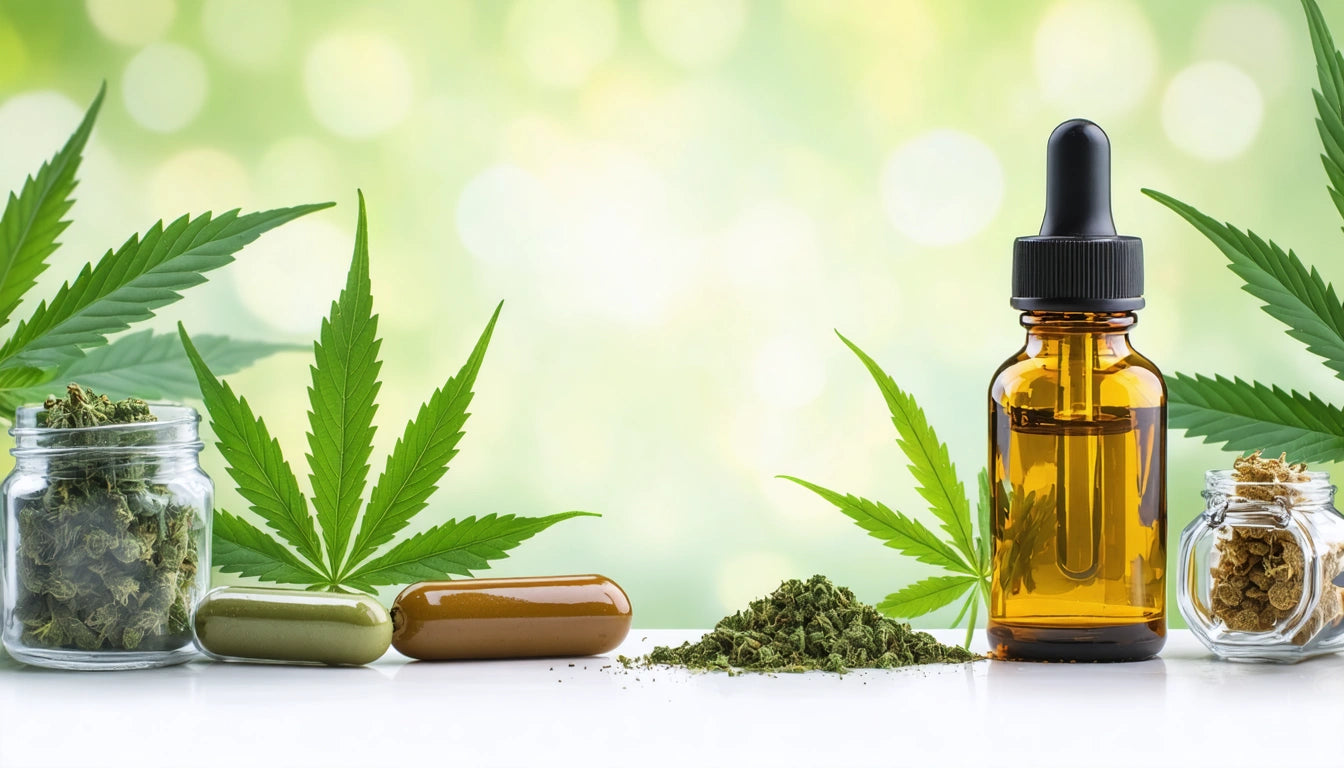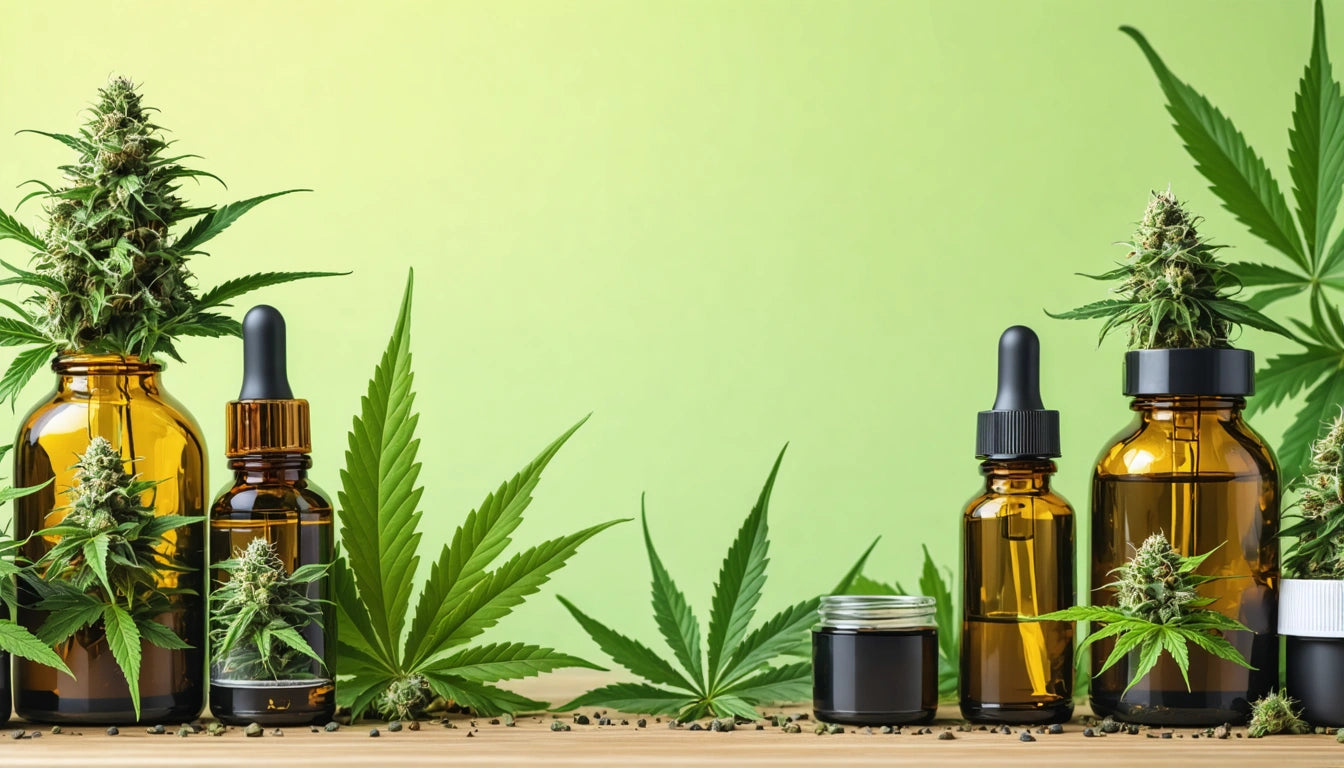Table of Contents
Exploring the Best THC for Pain Relief: Strains, Topicals, and More
Pain management represents one of the most common reasons people turn to cannabis products. Whether dealing with chronic conditions, nerve pain, or inflammatory issues, many patients report significant relief from THC-based treatments. This comprehensive guide explores the most effective THC options for pain relief, their applications, and how to maximize their benefits.
Understanding How THC Relieves Pain
THC (tetrahydrocannabinol) interacts with the body's endocannabinoid system, specifically binding to CB1 receptors in the brain and nervous system. This interaction alters pain perception and reduces inflammation, creating analgesic effects. According to research on THC effects and benefits, the compound works through multiple mechanisms:
- Reducing inflammatory response in affected tissues
- Disrupting pain signals traveling to the brain
- Altering emotional responses to pain
- Promoting relaxation and sleep that support healing
For conditions like fibromyalgia, THC's ability to affect both physical pain signals and emotional processing makes it particularly valuable. The best THC for fibromyalgia pain often combines moderate to high THC content with specific terpenes that enhance pain relief.
Best THC Strains for Different Pain Types
For Inflammatory Pain
Inflammatory conditions respond well to strains with balanced THC/CBD profiles and terpenes like myrcene and beta-caryophyllene. Top choices include:
- ACDC (1:1 THC:CBD ratio)
- Harlequin (5:2 THC:CBD ratio)
- Cannatonic (Equal THC:CBD ratio)
For Nerve Pain
The best THC for nerve pain typically comes from indica-dominant strains with high myrcene content. Studies on THC for nerve pain suggest these strains provide superior relief:
- Purple Kush (High THC, rich in pain-relieving terpenes)
- Granddaddy Purple (Strong physical relaxation effects)
- 9 Pound Hammer (High THC with sedative properties)
For Muscle and Spasm Pain
Hybrid strains with moderate to high THC levels work best for muscle pain and spasms:
- Blue Dream (Balanced hybrid with muscle-relaxing properties)
- OG Kush (Potent pain relief with euphoric effects)
- Girl Scout Cookies (Strong full-body pain relief)
THC vs CBD for Pain: Finding the Right Balance
The THC or CBD for pain debate isn't about choosing one over the other, but finding the optimal ratio for your specific condition. While THC directly activates cannabinoid receptors, CBD works indirectly and has anti-inflammatory properties with fewer psychoactive effects.
For many patients, products with both compounds provide enhanced relief through the "entourage effect." This synergy between cannabinoids often delivers better results than isolated compounds. When properly stored in quality airtight packaging solutions, these balanced products maintain their potency and therapeutic ratios longer.
Topical THC Solutions for Localized Pain
The best THC topical for pain provides targeted relief without systemic effects. These products work through local CB1 and CB2 receptors in the skin, muscles, and joints.
Effective Topical Options
- Balms and Salves: Concentrated products that stay localized on application areas
- Lotions: Lighter formulations that absorb quickly for larger surface areas
- Patches: The best THC patches for pain provide slow, controlled release over 8-12 hours
- Roll-ons: Convenient application for targeted areas like joints
Most effective THC pain creams combine cannabinoids with ingredients like menthol, camphor, or arnica for enhanced relief. Transdermal formulations penetrate deeper than standard topicals, reaching underlying tissues.
Consumption Methods and Their Effectiveness
How you consume THC significantly impacts its pain-relieving properties:
- Inhalation (smoking/vaping): Fastest onset (1-5 minutes), shorter duration (2-4 hours)
- Sublingual tinctures: Quick onset (15-45 minutes), moderate duration (4-6 hours)
- Edibles: Slow onset (30-90 minutes), longest duration (6-8+ hours)
- Topicals: Moderate onset (15-45 minutes), localized effects (3-6 hours)
For breakthrough pain, inhalation methods provide the quickest relief. For ongoing chronic pain management, longer-acting methods like edibles or patches often work better. This guide on THC products for wellness offers additional insights on consumption methods.
Maximizing THC Pain Relief Benefits
To get the most pain relief from THC, consider these evidence-based strategies:
- Start low, go slow: Begin with minimal effective doses to prevent tolerance
- Consistent timing: Regular dosing maintains stable cannabinoid levels
- Combine methods: Use fast-acting options for breakthrough pain alongside longer-acting forms for baseline relief
- Consider terpenes: Look for products rich in myrcene, beta-caryophyllene, and linalool
- Track effects: Keep a journal of strains, doses, and effects to identify what works best
Many patients find that combining THC with complementary pain management approaches like physical therapy, anti-inflammatory diets, and stress reduction techniques enhances overall effectiveness. The goal should be reducing pain while maintaining functionality and minimizing side effects.
As cannabis research advances, more targeted THC formulations for specific pain conditions continue to emerge. Working with knowledgeable healthcare providers who understand cannabinoid medicine can help develop the most effective personalized pain management protocol using the best THC options for your specific condition.











Leave a comment
All comments are moderated before being published.
This site is protected by hCaptcha and the hCaptcha Privacy Policy and Terms of Service apply.